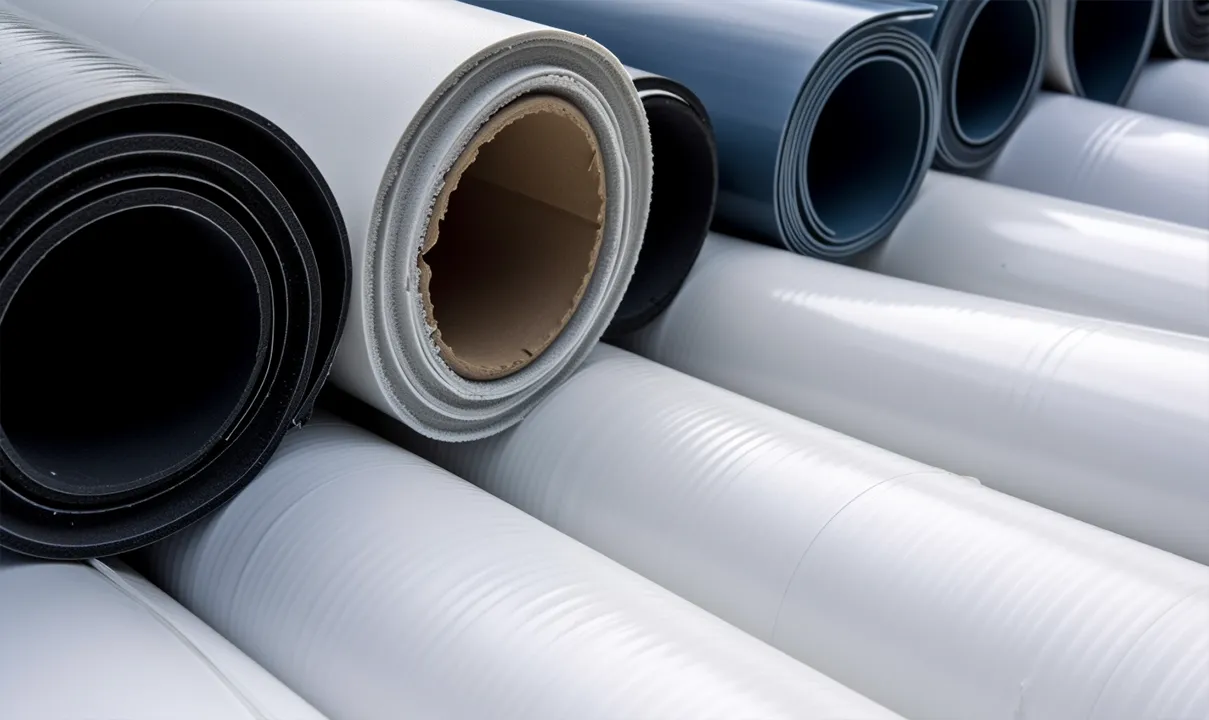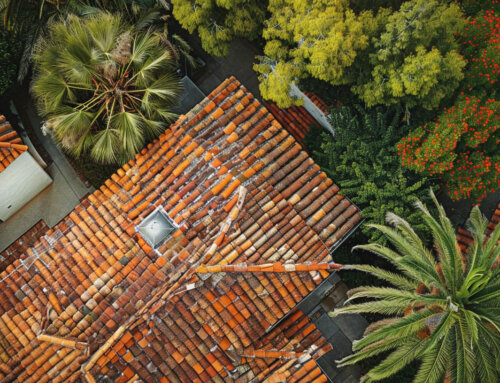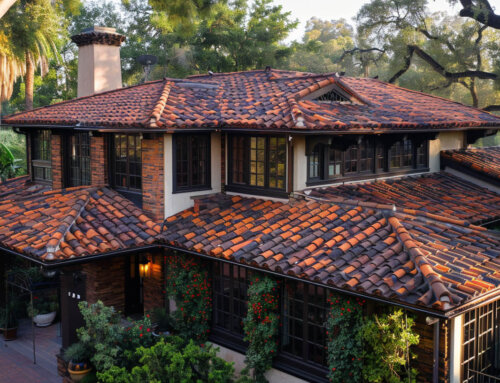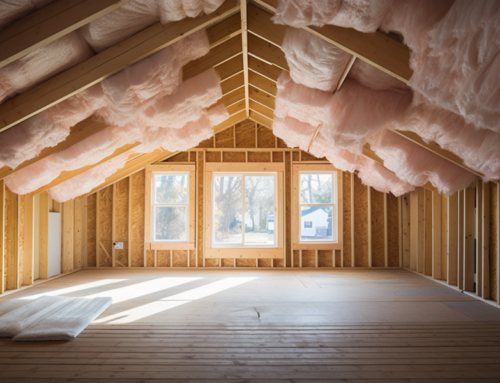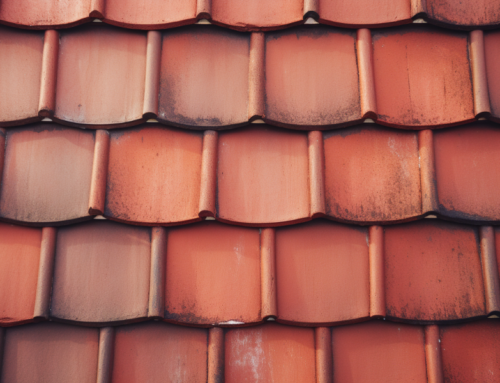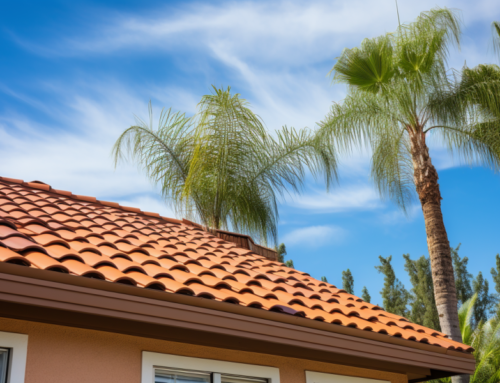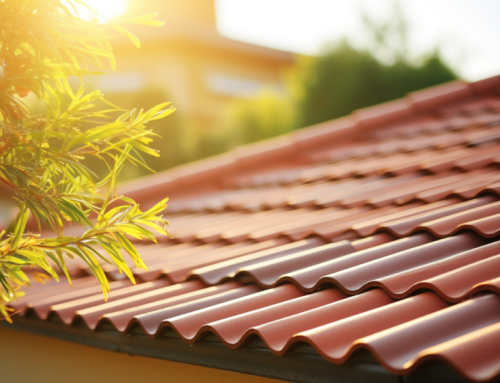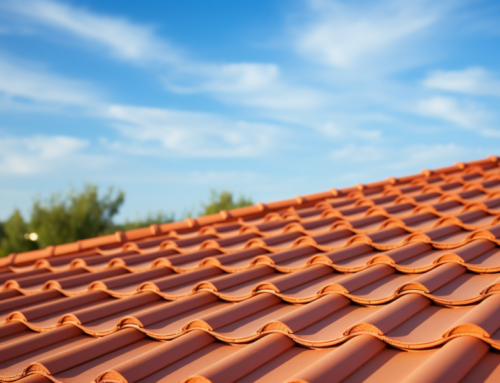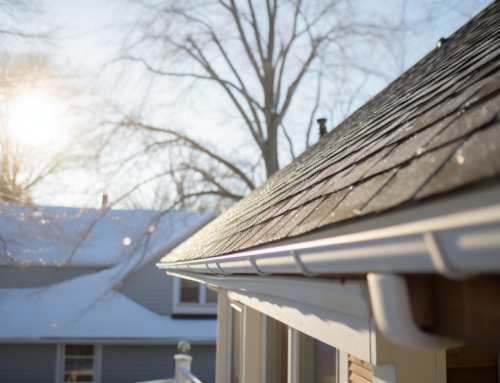Regarding roofing materials, TPO and PVC are two popular options. Understanding their differences is crucial for making informed decisions about your roofing needs.
Read this guide to know more.
What is TPO Roofing?
TPO roofing is a single-ply membrane made of ethylene-propylene rubber and polypropylene. It offers excellent UV and heat resistance. TPO roofing membranes are known for their durability, as they resist tears, punctures, and impact.
TPO roofs are commonly used in commercial and industrial applications due to their affordability and energy efficiency. These roofs are available in various thicknesses and widths and can be mechanically attached, adhered, or ballasted.
What is PVC Roofing?
PVC roofing is a single-ply membrane composed of a material called polyvinyl chloride. PVC roofs are highly durable and resistant to punctures, chemicals, and fire, making them a reliable choice.
PVC roofing membranes provide exceptional weather resistance, protecting against extreme temperatures, high winds, and heavy rain. They are available in different colors and styles, allowing for design flexibility and aesthetic customization.
TPO and PVC roofing materials offer unique advantages, and understanding their characteristics can help you make an informed decision for your roofing project.

How to Tell the Difference Between TPO and PVC Roofing
So, how do you tell a TPO roofing from a PVC one? Consider the following:
Material Texture
- TPO roofing has a smooth, rubber-like texture, while PVC roofing feels slightly grainy and plastic.
- The tactile difference in texture helps identify whether you’re dealing with TPO or PVC.
Color Options
- TPO roofing commonly comes in white, gray, and tan, while PVC roofing offers a wider color range.
- PVC roofing allows for more customization, providing options beyond white and gray.
Seam Appearance and Installation
- TPO roofing has heat-welded seams that are often less visible than PVC roofing’s hot-air welded seams.
- The visibility of seams can be an indicator of whether the roofing material is TPO or PVC.
When it comes to the installation process, there are notable differences between TPO and PVC roofing. Here’s what you should know:
TPO roofing installation:
Installing TPO roofing typically involves three main methods: mechanically attaching, fully adhering, or ballasting. Mechanical attachment involves securing the TPO membrane to the roof deck using fasteners and plates. Fully adhered installation requires applying adhesive to both the membrane and the roof substrate, creating a strong bond. Ballasting involves placing ballast material, such as gravel or pavers, on top of the TPO membrane to hold it in place.
PVC roofing installation:
PVC roofing installation methods are similar to those of TPO, including mechanical attachment, fully adhered, or ballasted options. Mechanical attachment involves fastening the PVC membrane to the roof deck using screws and plates. Fully adhered installation requires applying adhesive to both the membrane and the roof substrate, ensuring a secure bond. Ballasting involves placing ballast material on top of the PVC membrane, providing weight and stability.
Energy Efficiency
- TPO roofing boasts excellent reflectivity, reducing cooling costs and enhancing energy efficiency.
- While PVC roofing reflects some heat, it generally doesn’t match the energy-saving properties of TPO.
Cost Considerations
- TPO roofing is more cost-effective than PVC roofing, making it a budget-friendly option.
- If you’re looking to save on expenses, TPO roofing is a suitable choice over PVC.

The Benefits of TPO and PVC Roofing
Both TPO and PVC membranes have extensive benefits. Let’s look at each option individually.
TPO Roof Benefits
Energy Efficiency
TPO roofing system provides excellent reflectivity, reducing cooling costs and promoting energy efficiency. This is TPO membrane could the best option for your commercial roofing project needs.
Durability
TPO membranes are highly resistant to tears, punctures, and impact, ensuring long-lasting protection for your roof.
Chemical Resistance
TPO roofing membrane is resistant to chemical exposure, making it suitable for areas with high pollution or chemical emissions.
UV Resistance
TPO roofs have superior UV resistance, preventing degradation and extending the roofing system’s lifespan.
Easy Installation
Thermoplastic materials are lightweight and come in wide sheets, making it easier and faster to install, reducing labor costs.
PVC Roofing Systems Benefits
Durability
Both PVC and TPO roofing systems last exceptionally long. However, PVC roofing offers exceptional durability, with membranes that are resistant to impact, punctures, and chemical damage.
Fire Resistance
PVC roofing material has excellent fire resistance properties, providing an added layer of safety for your building.
Weather Resistance
PVC roofs can withstand extreme weather conditions, including high winds, heavy rain, and snow loads.
Low Maintenance
PVC roofing requires minimal maintenance, reducing the need for frequent repairs and saving on maintenance costs.
Design Flexibility
PVC membranes come in various colors and styles, allowing for customization and enhancing the aesthetic appeal of the building.

How to Decide the Best Option Between TPO and PVC:
Choosing between TPO and PVC roofing materials can be crucial for your project. Here are some factors to consider when deciding which option is best suited for your needs:
Climate and Weather Conditions
Assess the climate in your area, including temperature extremes, humidity levels, and the frequency of severe weather events. TPO roofing performs well in hot climates, while PVC roofing excels in colder regions with harsh winters.
Energy Efficiency Requirements
If energy efficiency is a priority, TPO roofing is an excellent choice due to its high reflectivity and ability to reduce cooling costs. Evaluate your building’s energy consumption goals and consider how each material can contribute to achieving those goals.
Durability and Longevity
Determine the expected lifespan of the desired roofing system. TPO roofing is known for its durability, with most manufacturers offering warranties of 15 to 30 years. On the other hand, PVC roofing often comes with longer warranties, ranging from 20 to 30 years or more.
Budget Considerations
Evaluate your budget and compare the cost of TPO and PVC roofing materials, including installation and maintenance expenses. TPO roofing tends to be more cost-effective, making it a preferred choice for those with budget constraints.
Specific Project Requirements
Consider any unique requirements of your project, such as building codes, environmental regulations, or architectural considerations. PVC roofing offers more design flexibility, allowing for customization and meeting specific aesthetic needs.
Ultimately, the best option between TPO and PVC roofing depends on your specific circumstances and priorities. It’s recommended to consult with roofing professionals who can assess your project requirements, provide expert advice, and help you make an informed decision.
Final Thought
Differentiating between TPO and PVC roofing doesn’t have to be complicated. You can easily distinguish between the two by considering factors such as material texture, color options, seam appearance, energy efficiency, and cost.
Remember to assess your specific roofing requirements and consult with professionals to ensure you make the best choice for your roofing project. San Diego County Roofing & Solar is the best choice. The company’s experience makes it the most reputable TPO and PVC roofer around.

